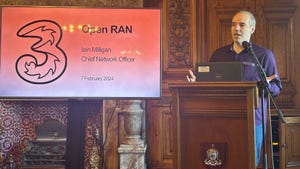Industry Innovations Drive Metro and Long-Haul Network Performance
After several years during which high speed coherent network deployments have been shifting from 100G/200G to 400G links using the C-band we are now seeing a significant move towards higher speeds and more use of multiband solutions. #sponsored
August 23, 2023

After several years during which high speed coherent network deployments have been shifting from 100G/200G to 400G links using the C-band we are now seeing a significant move towards higher speeds and more use of multiband solutions. Multiple communications service providers (CSPs) in leading markets have successfully upgraded core network links using first-generation 800G coherent solutions and more will upgrade as a second generation of 800G coherent solutions that are pushing the reach for 800G coherent interfaces to over 2,000 km become available. At the same time multiple carriers are deploying multiband solutions, doubling fiber capacity by using both the C-band and L-band. In parallel, several companies have introduced solutions that increase the width of the C-band and L-band, increasing capacity of each band by up to 50%.
The widespread deployment of 400G connections for metro and long-haul networks was enabled by a second generation of 400G coherent network systems supporting distances of significantly more than 2,000km by increasing the baud rate up to 90 Gbaud. Increasing the baud rate from the 60Gbaud supported by first generation 400G systems allows the use of lower-order modulation, replacing 64QAM by 16QAM or QPSK, which increases the reach achievable for a given data rate and fiber infrastructure. In the same way third generation 400G systems will support ultra-long haul networks by increasing the baud rate further.
The first generation of 800G coherent network systems support 90 Gbaud and some carriers have used these systems to upgrade metro and some longer distance links to 800G. The industry is now introducing second-generation 800G coherent network systems supporting 120-140 Gbaud that also enable 1.2T connections. These systems will support 800G connections of over 2,000 km, and ultra long-haul 400G connections of 5,000km or more. These second generation 800G systems consume less power and will be widely used by CSPs to upgrade metro and longer distance links within their core networks.
A further generation of coherent network systems is in development that will increase the baud rate to more than 190 Gbaud, enabling single wavelength 1.6Tbps transmission and ultra-long-haul 800G connections. These innovations do not increase the fiber capacity but will offer some important optimizations by reducing the number of wavelengths and optical components necessary for a given bandwidth and reach.
CSPs looking to increase the fiber capacity without adding additional fibers also have the option of using solutions that support wider frequency bands or multiband configurations. We have seen some significant innovations in these two approaches. Most coherent network deployments have used the 4-THz C-band (1530nm-1565nm). An increase in capacity of up to 50% be achieved by using a wider band (4.8THz extended C-band or 6THz Super C-band). These wider bands are achieved by extending the wavelengths covered by a band into the adjacent band and are made possible by enhanced amplifier design.
A 100% increase in fiber capacity over the C-band can be achieved by also using the L band (1565nm-1625nm). Initial deployments of this C+L configuration duplicated hardware with separate C-band and L-band implementations working together. The L-band can also be extended to 6THz (Super L-band). A second generation of multiband capable systems that implement combined C+L are available that offer an optimized multiband solution, accelerating the deployment of C+L and offering a practical approach for adding further capacity in the future by also using the S-band (C+L+S).
As the rollout of 400G coherent network connections continues, we are seeing an increasing number of CSPs upgrading links in their core networks to 800G, and looking at further upgrades to 1.2T and 1.6T. The latest industry innovations, including combined C+ L and wider bands, are making these network upgrades more attractive and driving up metro and long-distance network performance.
— Simon Stanley, Analyst at Large, Heavy Reading
This blog is sponsored by Huawei
About the Author(s)
You May Also Like




.jpg?width=300&auto=webp&quality=80&disable=upscale)







